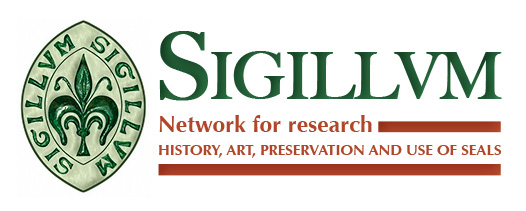Museums
Museums across Europe have collections of seal matrices from many different cultures, and although some institutions hold documents with seal impressions attached, these are normally held in larger numbers in national or local archives. During the nineteenth and early twentieth centuries, creating copies from seal impressions and seal matrices was practised by individuals whose private collections of seal matrices were later acquired by museums. These casts were often made from plaster, sulphur or gutta percha (a natural latex from the bark or leaves of the Palaquium gutta from Malaysia). Metal casts were also produced by electrotyping (a process in which a mould is placed in an electrolytic solution and plated with copper by an electrical current). Major institutions such as the Archives Nationales in Paris still create casts from their wax impressions.
As well as inheriting seal matrices and casts from private collectors, museums and national or local archaeology services also acquire new finds from excavations or from metal detectorists. For example, in England and Wales the Portable Antiquities Scheme (PAS) records antiquities found in these areas. Some of these are seals. The database contains 430,254 records of 682,996 artefacts. Seal matrix returns 2,911 results.
Museum curators and archaeologists are interested in seal matrices as examples of metalwork from different periods. The most common type is a simple lead die, often with an individual’s name, and for more sophisticated designs a copper-alloy die is usual. The material from which a matrix is made, the intricacy of the imagery and text, and the type of subject matter all provide information about its original owner. The number of seal matrices reported each year, and those held in collections already, have contributed to a better understanding of seal ownership across Europe, particularly during the Middle Ages.
SIGILLVM supports museum professionals in their work with seal matrices, impressions and casts, and will help to bring them into contact with others interested in these objects. For members, a series of pages from our representatives will provide further information on the collections in each country and links to their collections.
